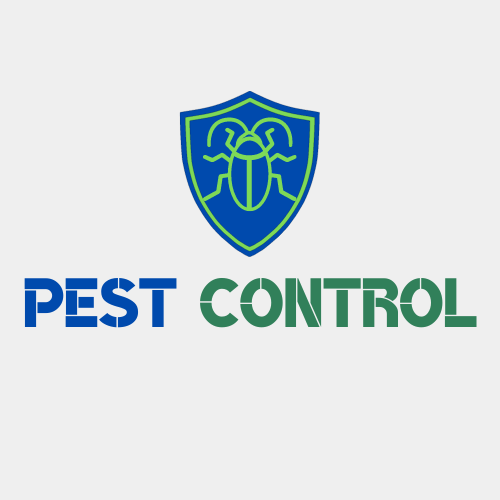Comprehensive Pest Control Solutions in Juárez: A Focus on Sustainable Practices
In the vibrant locality of 67275 Privada Belterra, Juárez, effective pest control is not just a service; it’s a partnership forged between pest control professionals and facility managers. The complex, dynamic nature of pest activity necessitates a forward-thinking approach that goes beyond traditional extermination methods. By working together, facility managers can maintain a pest-free environment while minimizing the need for frequent pest control interventions. In this article, we’ll explore how integrated pest management (IPM) practices, including predictive models and preventative services, can revolutionize pest control strategies for industrial settings.
Understanding the Pest Control Landscape
Pest control is an essential service not only to maintain the aesthetic of a facility but also to ensure the health and safety of its occupants. From insects and rodents to termites, the presence of pests can lead to significant costs, both financial and reputational. For businesses operating in industrial settings, the stakes are even higher. Pests can disrupt operations, damage goods, and pose risks to employee health.
By collaborating closely with facility managers, pest control experts can offer tailored solutions that monitor insect activity over time. This proactive strategy enables facility managers to anticipate pest-related problems before they escalate into major infestations.
Monitoring Insect Activity: A Proactive Approach
One of the key elements in effective pest control is consistent monitoring. By partnering with facility managers to monitor insect activity, pest control services can gather critical data that allows for timely intervention. This data-driven approach enhances the accuracy of pest management efforts and significantly minimizes the need for frequent pest control interventions.
Facility managers equipped with this knowledge can implement operational strategies that deter pests from infiltrating the facility in the first place. Common monitoring techniques include the use of traps, visual inspections, and thermal imaging technology, allowing for a comprehensive understanding of pest populations and their behaviors.
Predictive Pest Control Models: The Future of Pest Management
When it comes to effective pest control, predicting pest behavior can significantly enhance proactive measures. Offering predictive pest control models using historical data allows pest management teams to forecast potential infestations based on previous patterns. By analyzing data such as weather conditions, seasonal trends, and previous pest reports, pest control providers can prepare tailored strategies well in advance.
In Juárez, for example, certain insect populations may thrive during specific months of the year. By leveraging this information, facility managers can schedule preventive treatments when conditions are most favorable for pest activity. This not only reduces the overall need for pesticides but also promotes a more sustainable approach to pest control.
Termite Control: A Specialized Service for Industrial Renovations
Termites are among the most destructive pests, capable of causing significant damage to wooden structures, often without any visible signs. Consequently, partnering with contractors for termite control during building renovations is crucial. Implementing termite prevention services from the outset can save businesses considerable costs associated with pest damage and repairs.
By collaborating with skilled contractors and pest control experts, facility managers can implement preventive measures such as soil treatments and physical barriers to deter termite activity. Essential to this process is ensuring that all materials used are suitable for the specific industrial environment and comply with regulations.
Tailored Termite Prevention Services for Industrial Settings
In addition to termite control during renovations, providing tailored termite prevention services for industrial settings is essential, particularly in areas where wooden structures are prevalent. Specialized treatments and monitoring systems can ensure that these facilities remain pest-free, safeguarding valuable assets and maintaining a productive work environment.
These services may include regular inspections, the application of termite baits, and soil treatments that target the termite colonies before they can cause damage. In addition, educating employees about termite signs—such as discarded wings or mud tubes—can empower them to act quickly at the first sign of an infestation.
Offering Comprehensive Termite Control for Industrial Workshops
For industrial workshops that rely heavily on wooden material and structures, comprehensive termite control becomes a critical aspect of ongoing maintenance. Regular inspections, coupled with intervention strategies, provide a holistic approach to termite management.
This also entails keeping communication channels open between facility managers and pest control personnel to ensure that any signs of infestations are caught early. The goal is to create an environment where termites are continuously managed, ensuring that minimal, if any, disruption occurs during operations.
Emphasizing Integrated Pest Management
The importance of emphasizing integrated pest management (IPM) as a holistic pest control strategy cannot be overstated. This involves not only addressing current pest issues but also focusing on long-term sustainability solutions. Facility managers can benefit significantly from IPM principles, including:
1. Cultural Controls: Adjusting practices within the facility to minimize pest attraction and breeding.
2. Mechanical Controls: Using physical barriers such as nets, traps, and vacuum systems to limit pest access.
3. Biological Controls: Introducing natural predators to help maintain pest populations at acceptable levels.
4. Chemical Controls: Applying pesticide treatments judiciously and only when necessary, using products that are eco-friendly and effective.
Incorporating broad-spectrum prevention strategies based on IPM principles not only reduces pest populations but also curtails the need for extensive applications of chemical interventions.
Conclusion
In an evolving landscape where sustainable practices are becoming increasingly crucial, pest control services in 67275 Privada Belterra, Juárez, are leading the way through innovation and collaboration. By partnering with facility managers, pest control professionals are ensuring that industrial settings not only remain pest-free but also operate efficiently and sustainably.
With the implementation of predictive pest control models, regular monitoring, and targeted termite prevention that caters to the specific needs of industrial workshops, a safer and healthier work environment can be achieved. The importance of these preventative measures cannot be underestimated as they play a vital role in protecting businesses from the adverse effects pests can bring.
The future of pest control lies in collaboration, innovation, and a commitment to sustainable practices—creating spaces where both people and businesses can thrive without the burden of pest infestations.
